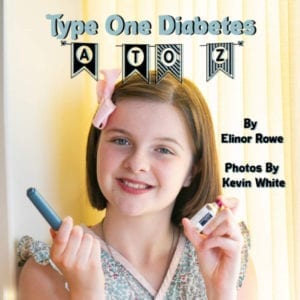
16 Apr Counting Carbs (and Blessings) at Easter!
Easter blessings! Our friends at Children with Diabetes created a wonderful carb count cheat sheet with Easter menu items and favorite candies.
We shared more ideas on celebrating Easter (and navigating food centric holidays) in our April 2, 2021, post, “Hop to It…Tips and Treats for Easter with T1D.”
A few quick notes on Easter carb cheat sheet… Glaze on a ham will add carbs. Check to see how it is prepared. Also, when it comes to enjoying jellybeans or chocolate bunnies, you have a sense of what works for your family. Our approach? As long as Ellie eats treats in moderation and monitors her blood glucose regularly to help minimize the disruption in blood sugar control, Easter (like Halloween and Valentine’s Day when candy is abundant) continues to be one sweet holiday.
We mentally (and physically) divide Easter candy into three categories: Treating lows, trading in, or dosing as a treat. Candy packaged for stuffing in an Easter egg can make the ideal fast acting carb when we’re on the go. We’ve even been known to check aisles of drugstores, grocery stories, and super centers when seasonal items are marked for clearance. We stock up on our fast acting carb supply/stash.
We like the convenience and portability of candy. It’s often easier to carry a few packets of Skittles, some Starburst squares, or a roll of Lifesavers than a juice box. We love the small bags of Skittles that come in at 16/17 carbs per packet. These are ideal for treating a low with 15 carbs, waiting 15 minutes, testing or monitoring your BG on your continuous glucose monitor (CGM), and repeating until back in range.
Despite its high sugar and carbohydrates, milk chocolate has a glycemic index of 42, and dark chocolate only has a glycemic index of 23, which is in the low range (below 55). This means the sugar is slow to be absorbed due to its high fat content. For this reason, never treat a low with chocolate. The added fiber in dark chocolate also slows the break-down of carbohydrates in the blood stream. You’ll stay low longer since it isn’t a fast-acting carb. In essence, chocolate is fine when dosing but not when treating a low. (Thanks to our friends at Beyond Type 1 for giving us the skinny on chocolate.) https://beyondtype1.org/all-about-chocolate/
If it’s a challenge to dose; causes blood glucose spikes; or creates heartaches, hassles, or health issues, you can ask your child to swap the sweets for a coveted new toy, book, or experience (movies, indoor mini golf, etc.). We’ve taken the candy in a basket to a workplace breakroom and donated it to our local Ronald McDonald House (along with a more substantive meal). A special gift will last long after the candy is a distant memory.
Chocolate lovers rejoice! Hershey Kisses and Miniatures are perfectly portioned for a sweet treat. At the risk of sounding violent, we’ve been known to cut up Ellie’s chocolate bunny to eat over the course of several days. We dose for Easter candy!
If you’re reading this in support of a loved one with T1D, include your friend with diabetes in all things food related. Ellie can eat most anything as long as she knows the carb count. Save food labels, and as always, check nutrition labels, google carb counts, and/or use the handy Easter carb cheat sheet above.
Lastly, managing diabetes can be relentless and taxing. May the miracle of Easter bring you renewal.





